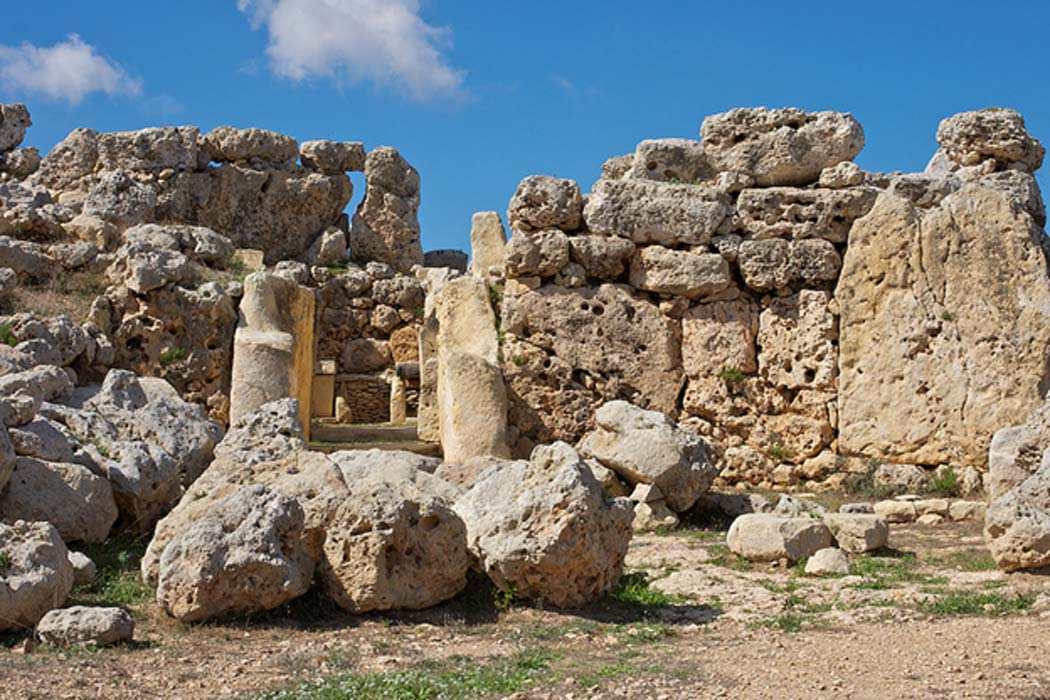Gigantija

Gigantija (Ġgantija in Maltese) is an archaeological site in Malta. Located on the minor island, Gozo, the temples of Gigantija date back to around 3600-2800 BCE.
They represent the largest group of Temples of Malta.
The site is oriented North-west, and it had several stages of development:
a: large clover-shaped temple;
b: addition of two lateral chambers;
c: minor temple;
d: delimitation with a curvilinear courtyard.
To build it, monoliths and a kind of dry stonework were used, the stones were rubbed with sand so that the blocks adhered better. The masonry consisted of 2 walls with a cavity filled with crushed stone.
The openings were well studied in order to give precise lighting effects that strike the most sacred part of the place on precise dates.

Gigantija is one of the megalithic temples of Malta first recognized as a World Heritage Site by Unesco in 1980.
The megalithic complex was built on the island of Gozo by the first Maltese population between 3600 and 3000 BCE, at three different times.
The temple is made up of two units built side by side, enclosed in a single external wall and bearing the same elevation; both have an entrance that overlooks a square in beaten earth.
Even though these buildings are currently commonly called temples, very little is known about what happened inside them, and it is only assumed that rituals of a religious nature were practiced.

Gigantija was used for about a thousand years, until the middle of the third millennium BCE (about 2500 BCE) when the first population and the related Maltese Templar culture mysteriously disappeared.
Before the excavations it was believed that the temple was actually a defensive tower erected by giants, this popular belief is testified by the Maltese word «ġgant» which means «giant».
After the excavations conducted by Bayer, the temple remained at the mercy of depredations for over a century, until the 1930s when the land on which the ruins stood was bought by the government. Restoration works were carried out which led the site to be open to visitors from 1949.

With the establishment of Heritage Malta – the national agency responsible for the management of museums and cultural heritage – the temple has been under its management since 2003.
Gigantija is currently the most visited cultural attraction in the Maltese islands.
